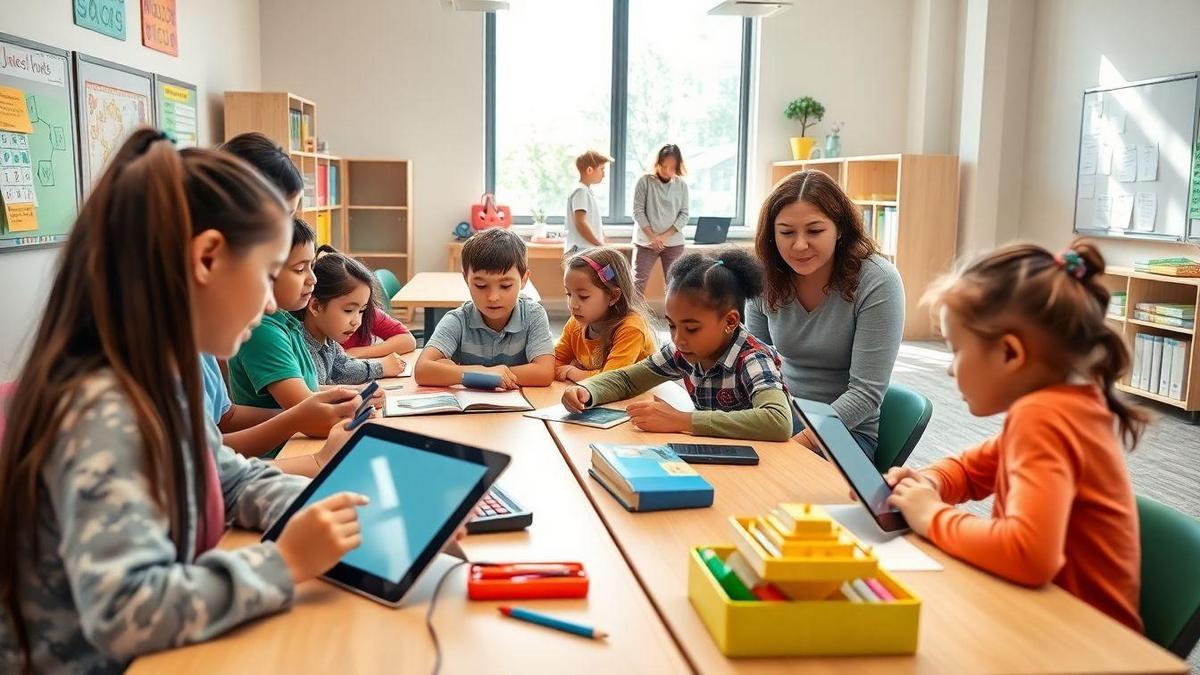In today’s fast-paced world, gaining a competitive edge in the education sector with specialized teaching methods is crucial for success. I want to share my journey and insights on innovative teaching strategies that truly engage students and foster a love for learning. By embracing personalized learning approaches and integrating technology, I’ve discovered how to make education exciting. Join me as I explore effective assessments, skill development, and the power of data-driven decision-making to create a dynamic learning environment that benefits every student. Together, we can unlock their potential!
Innovative Teaching Strategies That Work
The Power of Personalized Learning Approaches
In my classroom, I’ve discovered that personalized learning is a game changer. I take the time to understand each student’s strengths and weaknesses. This way, I can tailor lessons that fit their unique needs. For instance, when I noticed a student struggling with math, I created a series of fun, interactive activities just for them. This approach not only boosted their confidence but also improved their grades significantly.
I also give students choices in their learning. Allowing them to pick topics or projects that interest them leads to higher engagement levels. When students feel a sense of ownership over their education, they become more motivated and eager to learn.
Engaging Students with Technology Integration
Technology is like a magic wand in my teaching toolkit. I use it to make lessons more engaging and interactive. For example, I incorporate educational apps and online resources that make learning fun. Students can explore subjects through videos, games, and quizzes that appeal to their interests.
I’ve noticed that when I use technology, my students are more focused and excited about learning. They can collaborate on projects using tools like Google Docs, which helps them develop teamwork skills. Plus, I can easily track their progress through online assessments.
How I Use Data-Driven Decision Making
Data is my compass in the classroom. I collect information on student performance to guide my teaching. This means I can spot trends and adjust my methods quickly. For instance, if I see that many students are struggling with a specific topic, I can revisit it and approach it in a different way.
Here’s a simple table that illustrates how I use data to improve my teaching:
| Data Collected | Action Taken |
|---|---|
| Test scores | Review and reteach challenging topics |
| Participation rates | Introduce more engaging activities |
| Homework completion rates | Offer additional support or incentives |
By making decisions based on data, I can help my students succeed and stay ahead in their learning journey. This is essential for gaining a competitive edge in the education sector with specialized teaching methods.
Skill Development in Education
Building Lifelong Learning Initiatives
I believe that lifelong learning is the key to success in today’s fast-paced world. It’s like planting a tree; the more you nurture it, the stronger it grows. I’ve seen firsthand how continuous education can open doors. For instance, I started taking online courses to sharpen my skills. This not only helped me in my career but also boosted my confidence.
Here are some ways I’ve built lifelong learning initiatives:
- Workshops: I organized hands-on workshops that sparked curiosity and engagement.
- Mentorship Programs: I connected with others to share knowledge and experiences.
- Online Resources: I encouraged the use of platforms that offer courses on various topics.
These initiatives have helped many, including myself, to stay ahead and embrace new opportunities.
Effective Assessments and Feedback in Learning
In my experience, assessments and feedback are like the compass guiding us through the learning journey. I’ve always aimed to make these processes clear and constructive. Instead of just grades, I focus on meaningful feedback that helps learners grow.
Here’s how I approach assessments:
| Assessment Type | Purpose | Feedback Method |
|---|---|---|
| Formative | Monitor progress | Regular check-ins |
| Summative | Evaluate learning at the end | Detailed reports |
| Peer Assessment | Foster collaboration | Group discussions |
When I provide feedback, I ensure it’s specific and actionable. This way, learners understand what to improve. I’ve found that this method not only boosts performance but also builds a positive learning environment.
My Journey in Educational Leadership Strategies
My journey in educational leadership has been full of lessons. I remember when I first took on a leadership role. I was eager yet nervous, like a ship setting sail for the first time. I realized that effective leadership is about guiding others and fostering a supportive atmosphere.
Here are some strategies that have shaped my leadership style:
- Collaboration: I work closely with teachers and staff to create a unified vision.
- Open Communication: I encourage everyone to share their thoughts and ideas.
- Adaptability: I stay flexible to meet the changing needs of students and educators.
Through these strategies, I aim to inspire others and create a community that thrives on gaining a competitive edge in the education sector with specialized teaching methods.
Enhancing Student Engagement Techniques
Creating a Dynamic Learning Environment
Creating a dynamic learning environment is key to keeping students engaged. I believe that when students feel comfortable and excited about learning, they are more likely to participate and ask questions. I often rearrange the classroom to make it feel fresh and inviting. For example, I set up cozy reading corners with bean bags and colorful pillows. This setup invites students to dive into books and share their thoughts with peers.
I also incorporate interactive activities like group projects and hands-on experiments. These activities not only make learning fun but also help students connect with the material on a deeper level. When I see students collaborating and sharing ideas, I know I’m on the right track.
The Role of Specialized Teaching Methods
Specialized teaching methods play a huge role in engaging students. I’ve found that when I tailor my approach to meet the needs of each student, the results can be astounding. For example, I use visual aids for visual learners and hands-on activities for kinesthetic learners. This personal touch makes a world of difference.
Here’s a simple table to illustrate some specialized methods I use:
| Learning Style | Specialized Method |
|---|---|
| Visual Learners | Use charts and videos |
| Auditory Learners | Incorporate music and podcasts |
| Kinesthetic Learners | Hands-on experiments and games |
By using these specialized methods, I can reach every student. They feel valued and understood, which boosts their confidence and engagement.
My Secret to Gaining Competitive Edge in Education Sector with Specialized Teaching Methods
My secret to gaining a competitive edge in the education sector with specialized teaching methods lies in my commitment to adaptability. I constantly observe and adjust my teaching strategies based on my students’ responses. For instance, if I notice that a particular lesson isn’t resonating, I quickly pivot to a different approach. This flexibility allows me to keep my students engaged and eager to learn.
I also believe in the power of feedback. I regularly ask my students what they enjoy and what they find challenging. This open dialogue helps me shape my lessons to better fit their needs. When students see that their opinions matter, they become more invested in their education.






